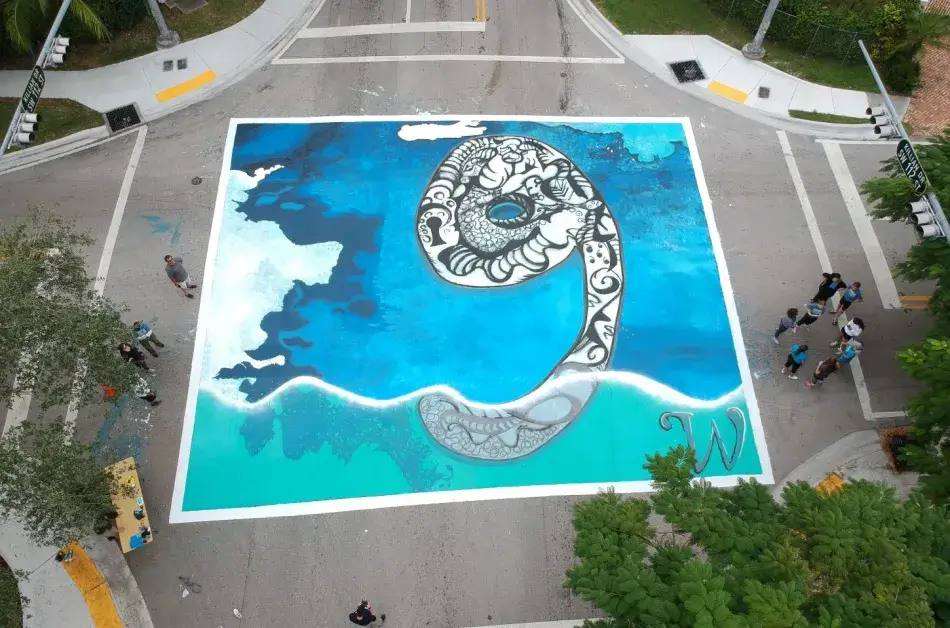Case study
Xavier Cortada: Using public art as activism for climate action

Art, especially public art, is one effective way to reach diverse audiences with information about climate change.iFor both the artist and the viewer, art helps people emotionally connect to ideas and process the world around them. Though the experience is subjective, art has the capability to bring people together and comment on some of the largest movements and issues facing society.
One artist working at the intersection of art and activism is Xavier Cortada, a Miami-based artist who creates global art that deals with topics of climate change and justice.iiHis works are from his series “Florida is...Nature.” This series depicts diatoms, which are single-celled alga that live in water and convert energy from the sun into sugar, producing 20-30% of the air humans breathe. Fossilized diatoms can provide information about the past, such as the salinity of their environment. In his digital pieces from this series Cortada takes photographs of diatoms using a microscope and creates colorful kaleidoscope-esque imagery. This series is displayed in the Turkey Lake Plaza on the Florida Turnpike in Orlando, allowing any member of the public who enters the building to engage with Cortada’s work. Cortada explains that diatoms use the sun to produce energy, just as solar panels do, and chose these images to reflect on state regulations inhibiting solar panel adoption. Cortada appreciates the power of art to make people pause and reflect. It is in this pause that viewers have a chance to consider the path forward. As Cortada has said, “We need art to show us the way.”


